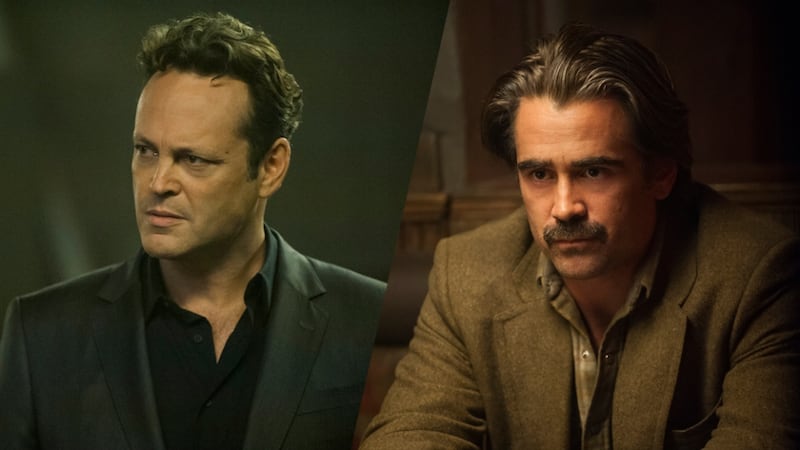True Detective has crawled its way out of the Louisiana bayous and slithered into the seedy underbelly of an LA suburb. Show creator Nic Pizzolatto has left behind nearly all the trappings of the first season for a fresh take on Californian crime noir – although he’s got a cast every bit as glittery to hang it on.
Gone is the southern Gothic backwater setting that made much of season one so compelling. Pizzolatto has shifted the drama to Vinci, one of the more beaten-down parts of LA county. This is an all-industrial town that makes its money from handling the waste of the rest of the county, and seems to have adapted to its role at the bottom of the heap.
Among those feeding at the bottom are Frank Semyon (Vince Vaughan), a local hoodlum on that most traditional of crime paths: the road to legitimate businessman. A new rail system through parcels of land he has control of should finally make the switch: if only his main inside man hadn’t shown up dead, with his eyes burned out.

Enter bent copper Ray Velcoro (a jowly, mustachioed Colin Farrell), who has the curious task of investigating the crime while informing Semyon and the local mayor, who could give Fifa lessons in graft. Also investigating the crime for a bewildering array of conflicting US agencies are detective Ani Bezzerides (Rachel McAdams) and highway patrolman Paul Woodrugh (Taylor Kitsch). Ani seems to be in a McNulty competition with Ray, while Paul just wants to get back on his bike and ride away from what’s chasing him. Expect sparks to fly and their various dark pasts to catch up with them.
Smoke and mirrors
In season one, True Detective played its cards stylishly close to its chest, and for at least four episodes it seemed as if Rust Cohle's philosophical ramblings were going to cohere into a satisfying whole. They didn't, and a saccharine ending suggested that Pizzolatto didn't have a great reveal in his arsenal. Instead, it relied heavily on the show's outstanding atmosphere and cinematography, and more than one jaw-dropping set piece during the run made sitting through its smoke and mirrors plot almost worth it.
Here, Pizzolatto response is intriguing and ambitious. Corruption, politics and power have replaced sex, family and the occult as the framework for his sprawling narrative. The film is set in the present day, but he’s now relying on the slow-burn drag of LA noir, evident in the lingering, smoky shots and the drawl of the character’s lines. He’s not ready to give up the philosophising either: “My suspicion is we get the world we deserve,” says Ray at one point. At the opening of the episode, he forcefully tells a lawyer in the poisonous custody battle over his son: “I welcome judgment.” This is a man who seems ravaged by the knowledge that he’s an effective detective, but he’s also hooked on booze, drugs and easy money. As far as self-punishment goes, that judgment can’t come soon enough.
McAdams' character is perhaps the most intriguing. Her father is a wealthy mystic and Big Sur seer, whose peace-and-love lifestyle seems to have ravaged his family - and calling his daughters Antigone and Athena is asking for trouble in a classy TV drama that loves its classical allusions. Here’s hoping Pizzolatto resists the obvious temptations of making this drama repeat its Greek antecedents. Vince Vaughan, however, looks like a man unmoored, hulking his way through scenes and trying to muscle up some menace that never fully settles.
Night-time crime
There are moments in this first episode that live up to the directorial flourishes of the first season, particularly the fantastic final scene: a slow bleached-white overhead of the night-time crime scene, that pans up to reveal the darkness all around, and keeps going to show the sunrise in the distant hills.
In ditching the sinister setting for a more straightforward police and political procedural, Pizzolatto has thrown out one of his trump cards. Even one episode in, the plot is already spinning out into many different strands. Keeping them coherent and maintaining the momentum will be the challenge, which was one of the main failing's of True Detective's first run.









